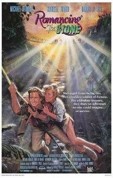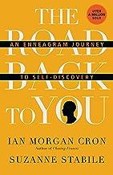 In a previous blog, The Mystical Enneagram Part 1, I introduced the concept of personality inventories. The Myers-Briggs and the Enneagram are two of the most popular. If you haven’t filled out one of these questionnaires, you might be in the minority. Employers, teachers, psychologists, and personal growth counselors use these tools to give insight into personality strengths and motivations.
In a previous blog, The Mystical Enneagram Part 1, I introduced the concept of personality inventories. The Myers-Briggs and the Enneagram are two of the most popular. If you haven’t filled out one of these questionnaires, you might be in the minority. Employers, teachers, psychologists, and personal growth counselors use these tools to give insight into personality strengths and motivations.
Authors have tapped into these tools to move their characters forward in relationships, jobs, life goals, investigations, murders, etc.
Everyone who has ever taken a novel or short-story writing class is taught to research their characters. Authors get to know their heroes and villains inside and out. A short list includes age, physical descriptions, where they live, family members, friends (childhood and current), talents, jobs, life pain and trauma, fears, dreams, loyalties, love life, secrets, flaws, spiritual journey, and internal conflicts.
The Enneagram is especially helpful with internal conflicts. What must the character do that goes against their beliefs, challenges their understanding of the world, and tests their physical or mental abilities? What gets them out of their personality comfort zone?
 Going back to the movie Romancing the Stone, Kathleen Turner’s character, Joan Wilder, faced all these challenges, which is why I loved the film. Joan’s chivalrous romantic hero belief was flipped upside-down with the rude character played by Michael Douglas. Traveling from her solitary city apartment to the jungles of Columbia, she faced one feared obstacle after another, releasing her inner heroine.
Going back to the movie Romancing the Stone, Kathleen Turner’s character, Joan Wilder, faced all these challenges, which is why I loved the film. Joan’s chivalrous romantic hero belief was flipped upside-down with the rude character played by Michael Douglas. Traveling from her solitary city apartment to the jungles of Columbia, she faced one feared obstacle after another, releasing her inner heroine.
So how does the Enneagram help an author plot a successful story and grow their characters’ character? Find out the inner strengths and weaknesses and start attacking those, set up tests, hurdles, complications, and difficulties—problem areas for that particular character type. Sloshing through a jungle swamp may be a jolly adventure for some people.
 There are libraries full of books and research on personality types. The following is not a guide to the Enneagram. It is a short description of personality type motivations and their dark sides. I recommend listening to a podcast or reading a book if your interest is piqued. I just finished The Road Back to You by Ian Morgan Cron and Suzanne Stabile.
There are libraries full of books and research on personality types. The following is not a guide to the Enneagram. It is a short description of personality type motivations and their dark sides. I recommend listening to a podcast or reading a book if your interest is piqued. I just finished The Road Back to You by Ian Morgan Cron and Suzanne Stabile.
Can you identify characters in your favorite novels and movies? I believe Kathleen Turner’s character was #4 Romantic.
#1 Perfectionist, desire to live right, improve the world, avoid blame: Compulsion to fix everything wrong
#2 Helper, need to be loved and needed and avoid acknowledging their own needs: They know best and are indispensable
#3 Performer, need to be or appear successful, avoid failure: Authentic self gets lost in the fake manufactured image
#4 Romantic, need to be understood, avoid being ordinary: Have difficulty experiencing happiness, and they envy it in others,
#5 Investigator, need to gain knowledge and avoid relying on others: Isolates and hoards their time and energy
#6 Loyalist, motivated by fear and need security: Decisions are based on the fear of bad things that might happen
#7 Enthusiast, need to be happy, have fun experiences, avoid pain: Live life avoiding sadness, disappointment, frustration, and therefore miss much of life
#8 Challenger, need to be strong, avoid feeling vulnerable: Full-throttle life experience over meaning
#9 Peacemaker. Need to get along with others, avoid conflict: Out of touch with their feelings and needs